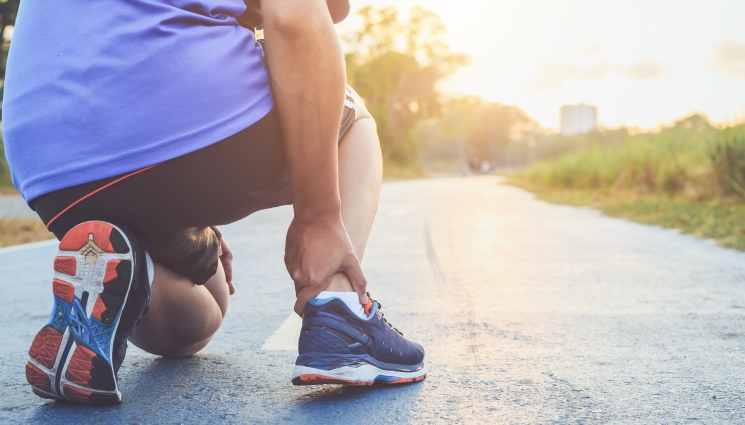
What is a lateral ankle sprain?

On the outside of your ankle you have ligaments called the Anterior talofibular ligament (ATFL), Calcaneofibular ligament (CFL) and posterior talofibular ligament (PTFL). These ligaments attach from the fibula (outer lower leg) and into the foot providing stability to the ankle.
A sprain of these ligaments most commonly occurs when the foot is pointed inwards +/- downwards causing the outside of the foot to roll in the ground overstretching the lateral ligaments. This commonly occurs during a fall, whilst walking on uneven surfaces or during sport.
Severity

Ankle sprains are graded based on the size of ligamentous tear on imaging along side clinical examination
Grade 1 – Mild stretching and some damage to the ligament fibers.
Grade 2 – Partial tear of the ligament. Will often involve more than 1 ligament.
Grade 3 – Complete rupture often associated with mutiple ligaments
Additional contaminant injuries such as fractures and impingement may also add to the injury severity.
Signs and symptoms

- Tenderness and pain, particularly on weight bearing
- Swelling and bruising
- Reduced ankle Rage of motion
- Ankle instability
- Muscle Weakness
- Popping sensation at the time of injury
Chronic ankle instability (CAI)
- CAI is a condition characterised by repetive episodes of the ankle giving way with symptoms which persists for more than 1 year following the initial injury.
- Research shows up to 40% of individuals develop CAI following an acute ankle sprain.
- Therefore if you are experiencing these signs and symptoms then it is likely that you have CAI.
How can physio help?

- Acute injury management – ruling out fracture, assisting with mobility and pain and swelling management.
- Advising on likely severity/ providing relevant onward referral
- Increasing ankle range of motion
- Foot intrinsic and extrinsic muscle strengthening
- [Ankle Strengthening Exercises To Improve Lower Body Stability] Gait and balance retraining
- Preparation for return to sport
- Treatment and prevention of CAI and traumatic ankle osteoarthritis
Conclusion
- Lateral ankle sprains are extremely common in the athletic and non-athletic populations.
- There is a 40% chance that you develop CAI following an ankle sprain.
- If you are persistently ‘going over’ your ankle or experiencing the symptoms discussed it is probably because you have CAI.
- Physio can help with the prevention and treatment of CAI. Give us a call if this applies to you!
